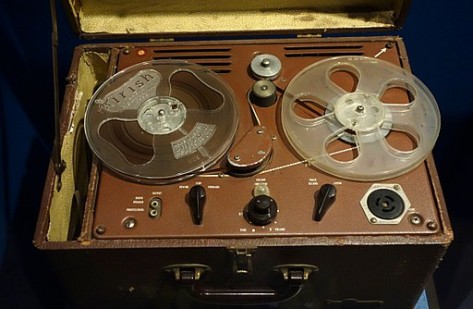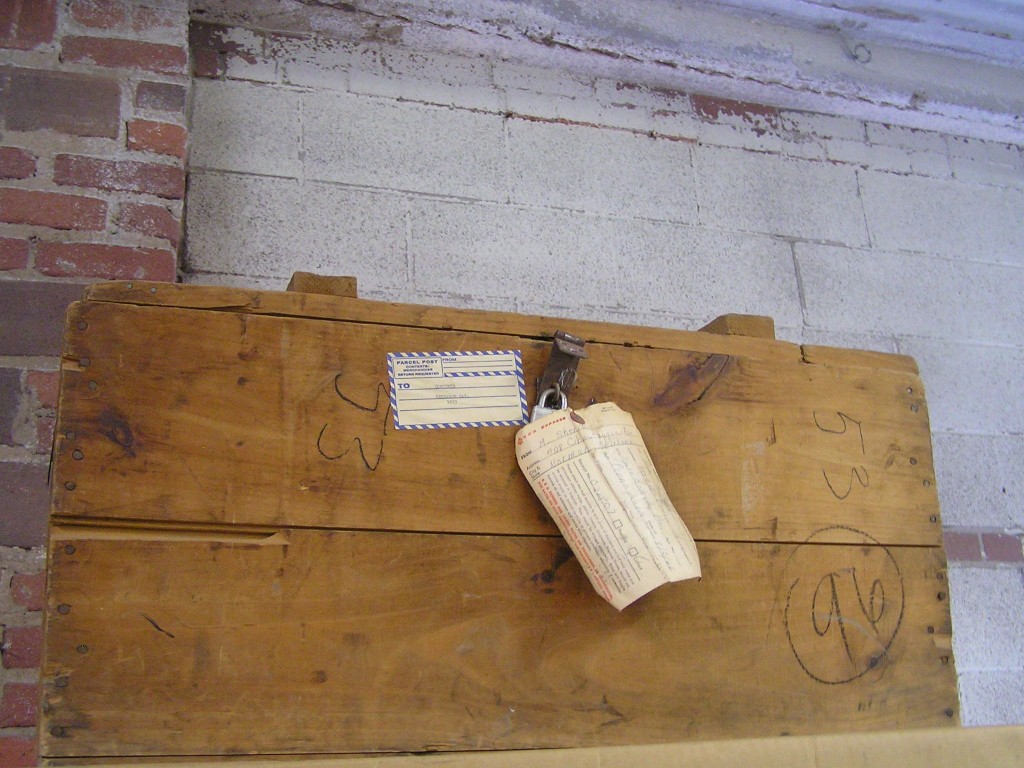Social psychologists like Muzafer Sherif and Stanley Milgram were committed to recording as much of their experiments as possible. Not just on paper, but with movie cameras, still cameras and reel to reel tape recorders.
Covert surveillance techniques went hand in hand with techniques of deception. Sherif expected his staff to be convincing actors in their roles as camp counsellors. Sherif pretended to be the grounds caretaker so that he could move freely around the park making surreptitious observations without arousing the boys’ suspicion.
All the while Sherif and his team were recording what they saw and heard. On my last visit to the Centre for the History of Psychology I watched some of their film footage and sifted through hundreds of photos. I was surprised that what I expected to be surreptitious behavior was so out in the open. In one photo, a man wearing a bowtie with a cigarette dangling from his mouth stands taking notes beside a group of boys engaged in tug of war. On the other side of the boys, we can see Sherif behind a tripod, filming events as they happened.
Smut Smith, one boy I interviewed, spontaneously mentioned the ‘camp counsellors’ taking notes although he said he had no idea that he was part of a psychology experiment.
I used a tiny sample of the hundreds of hours of audio recordings Sherif made of two of his three experimental camps in my book The Lost Boys and in my radio documentary Inside Robbers Cave.
Sherif hid the recorder in the large messhall where the groups gathered for meals and announcements, angling the microphone to capture the boys’ reactions to news of competitions, displays of prizes and of course, the namecalling and hostility between the two groups.
I’m sure that if Sherif could have carried a portable, battery operated recorder he would have, but in 1954 that may well have been either too impractival or expensive. So in between the audio recordings, Sherif had staff carry notebooks, still cameras and movie cameras to capture as much of the action of the experiment unfolding as possible. When the camp was over, Sherif transported all the data in the wooden trunk pictured.
After Sherif’s death, and after years in storage, the family donated the trunk and its contents to Archives of the History of American Psychology. Professor David Baker, Director, describes the collection as ‘a gem’. It includes all the observers handwritten notes, typed reports, audio recordings, film, and photos, as well as drawings by the boys, and the famous flags.
Like the photographs revealing how secret surveillance was not so secret, the Sherif collection suggests a story more complex and more revealing than the experimenter might have intended.





1 Comment
well done gina!!